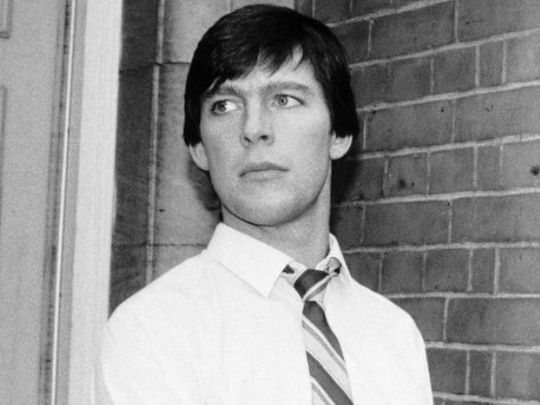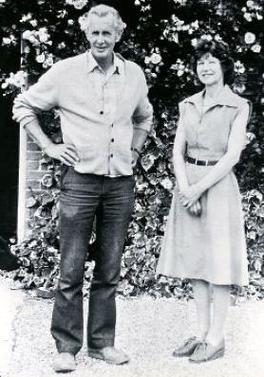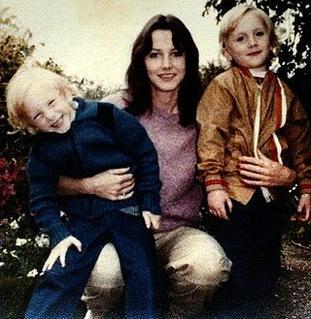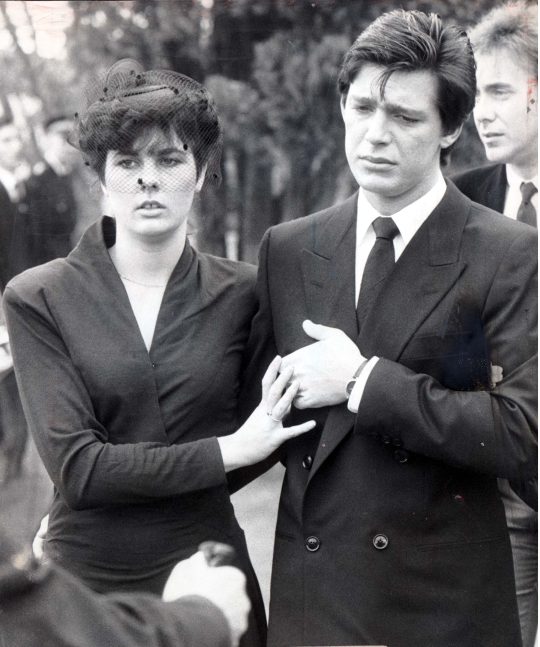#fostering agencies in Essex
Explore tagged Tumblr posts
Text
The Best News of Last Week
😷 - Mask off, but guard up! Seems like we're out of the tunnel
1. Abandoned dog seen wandering Detroit streets with stuffed toy rescued, now receiving care

An abandoned dog is preparing for a new home after animal rescue groups spent days trying to find her when she was spotted wandering Detroit with a stuffed toy. Nikki's owner recently died, and she was left to wander the streets with her favorite toy.
As Nikki receives her care, the animal workers are making sure she is ready to head to her foster home. Almost Home is collecting donations to help pay for the treatment and Niki's care. Donate here.
2. New foster care agency matching LGBTQ+ kids with queer carers to become ‘their amazing, wonderful selves’

A new foster care service has been launched to help match LGBTQ+ young people with supportive carers and families in the South East of England. Apex Q, a service from agency Apex Fostering, will help encourage more LGBTQ+ foster carers, provide training and create more placements for queer children.
Apex Fostering, which covers north and east London as well as several southern counties, including Hertfordshire, Essex and Cambridgeshire, launched in 2021 and claims to have already placed more than 60 young people with foster families.
3. Newquay Zoo celebrates birth of rare 'warty' piglets

A pair of rare piglets has been born at Newquay Zoo in Cornwall. The Visayan warty pigs, named for the three pairs of fleshy "warts" on the boar's face, which protect it while fighting rival pigs, are part of a breeding programme at the zoo.
The species lives in the forests of the Philippines, where there could be as few as 200 animals left.
4. New Alzheimer's drug slows disease by a third

We could be entering the era of Alzheimer's treatments, after the second drug in under a year has been shown to slow the disease. Experts said we were now "on the cusp" of drugs being available, something that had recently seemed "impossible".
The company Eli Lilly has reported its drug - donanemab - slows the pace of Alzheimer's by about a third.
5. Covid global health emergency is over, WHO says

The World Health Organization (WHO) has declared that Covid-19 no longer represents a "global health emergency". The statement represents a major step towards ending the pandemic and comes three years after it first declared its highest level of alert over the virus.
But Dr Tedros Adhanom Ghebreyesus warned that the virus remained a significant threat.
6. Doctors have performed brain surgery on a fetus in one of the first operations of its kind

The baby’s condition, known as vein of Galen malformation, was first noticed during a routine ultrasound scan at 30 weeks of pregnancy. The seven-week-old is one of the first people to have undergone an experimental brain operation while still in the womb. It might have saved her life.
Before she was born, this little girl developed a dangerous condition that led blood to pool in a 14-millimeter-wide pocket in her brain. The condition could have resulted in brain damage, heart problems, and breathing difficulties after birth. It could have been fatal. The baby girl was born healthy. She didn’t need any treatment for the malformation.
7. Lastly, watch this father stork brings a blanket to warm up mother stork
youtube
----
That's it for this week :)
This newsletter will always be free. If you liked this post you can support me with a small kofi donation:
Buy me a coffee ❤️
Also don’t forget to reblog. SUBCRIBE HERE for more good news in your inbox
337 notes
·
View notes
Text






















(Installation photo credit: Hai Zhang)
Exhibition | Ah New Riddim: A Marked (Black) Axiological Shift at Cuchifritos Gallery + Project Space
Can the axiologies and stories oscillating at the margins mark the discourse of Western logic positioned at the center, and how might this marking register in visual representations of the urban?
Ah New Riddim (2023) is the third and final iteration of the multimedia series Constructs and Context Relativity (2019-2023) by interdisciplinary artist Christie Neptune. The installation and interactive documentary examines the spatial-temporal relationship of memory and place embedded within the implosion of dancehall culture in East Flatbush. The film utilizes 80’s dancehall archival footage, the quiet of black subjectivity, and concentric interactive storytelling to expound the relationship between black globality and dancehall in the American urban. In a pivot around her embodied experience as a black Caribbean American, Neptune considers the potential of black popular culture in marking space.
In Ah New Riddim, concentric storytelling registers a cacophony of black perspectives. Neptune’s subjective experience in the American urban and the migration stories of community members in East Flatbush pivot around dancehall home video of Neptune’s father. Research, writing, and art produced from this series work to frame an artistic intelligence around Marked Axiological Shifts, a concept introduced by Neptune in a recent essay that defines a new language in visual culture grounded in African world-making cosmologies.
Marked Axiological Shifts are nonlinear and interactive artistic approaches that register a perpetual reimagining of black futures across space and time. It marks the decorum of modern cinema and visual culture with the conventions of African temporality to foster multiple planes of perspectives and fields of movement within concentric forward moving narratives mapped across moving images, sculpture, performance art, and print. In this exhibition, six channels of video interface with scaffolded speakers made of mirror, LED monitors, and wood. The speakers, a re-articulation of the Caribbean Sound System tradition, add further nuance to the filmic encounter in space. As material, screen, haptic surface, and sculptural unit, the sound system transmits information that doubles the spectator’s spatial perception. Upon contact, the spectator experiences temporal disjuncture caused by the collapse of their point of view, embodied form, and projected media upon the unit’s reflective surface. The gesture fosters multiple fields of viewing within a single expressive form, an element integral to African frameworks of temporality.
Ah New Riddim demonstrates the potential of black popular culture within representational practices that speaks across both dominant and marginal spatialities. This new framework of understanding considers the agency of marked axiological shifts within discursive urban space, an intervention that superimposes a wide aperture of black subjectivity(s) upon the narrow plane of the American urban.
This exhibition draws from Christie Neptune’s research paper “Ah New Riddim: A Marked (Black) Axiological Shift Across Space and Time” [READ HERE]
August 04, 2023 to September 16, 2023 Cuchifritos Gallery and Project Space Inside Essex Market, 88 Essex St #21, New York, NY 10002
Exhibition Link: https://www.artistsallianceinc.org/exhibitions/
Thank you to every supporter who contributed to make this exhibition happen:
Foundation of Contemporary Art, MIT Council of the Arts, MIT Art, Culture, and Technology program, Artist Alliance Inc., Cecile Chong, Emily B. Yang, Tariku Shiferaw, Larry Cook, Ayesha Charles, Jenna Charles, Terence Washington, David Freedman, Claire Watson, Mike Tan, Jodi Waynberg, Micaela Martegani, Jeff Swinton, Carl Hazelwood, Aisha White, Milk Spawn, Cari Sarel, Vivian Chui, Paul So, Camilo Alvarez, Kelsey Scott, Mike Brown, Darla Migan and Mary Lee Hodgens.
3 notes
·
View notes
Photo

danfloor UK Ltd - Area Sales Manager
About the job
Danfloor UK – Sales Manager – South East
Area Covered – North & East London, Essex & Hertfordshire
About danfloor (UK) Limited:
danfloor (UK) Limited, part of the Ulster Group, is a leading innovator in specialist carpets, providing high-quality flooring solutions for the healthcare, education, and commercial sectors. During the last 25 years, we have built a strong reputation for quality and service, which is delivered through our teams passion and commitment. We are now looking to expand our reach in London and the South East and are therefore looking for a dynamic and motivated Sales Manager to join our growing team.
Role Overview:
This is a unique and exciting opportunity for an individual with a strong background in sales within the interiors and construction market. As the South East Sales Manager, you will be responsible for raising danfloor’s profile within your designated region, establishing new business relationships, and nurturing existing connections. You will engage with key stakeholders, including flooring contractors, interior fit out companies, architects, designers, and specifiers, to actively seek new business opportunities to develop our reach across multiple sectors and promote the specification of danfloor to a wider audience.
The successful candidate will be expected to:
· Develop and implement strategies to raise danfloor’s visibility in the region.
· Build and maintain relationships with existing commercial and healthcare customers.
· Identify and pursue new business opportunities within the area.
· Work closely with architects, designers, and specifiers to drive sales and promote the danfloor brand.
· Be a proactive ambassador for danfloor’s innovative product range in the textiles and interior finishes market.
Ideal Candidate:
We are seeking someone who is self-driven and thrives in a fast-paced, competitive environment. The ideal candidate will have:
Proven sales experience within the construction, interiors, or flooring market.
Strong relationship-building skills with a focus on specifiers, including commercial fit out companies, Interior designers and contractors.
Experience within key sectors such as healthcare, education, residential care, and commercial interiors.
The ability to influence and communicate effectively at all levels, from contractors to decision-makers.
A proactive, results-driven approach with a passion for delivering exceptional customer service.
A full UK driving license and willingness to travel within the designated territory and to other areas when required.
Benefits:
At danfloor (UK) Limited, we believe in rewarding our team members for their hard work and dedication. As the South East Sales Manager, you will receive the following benefits:
Competitive Salary with performance-related bonuses.
Company Car or car allowance.
Pension Scheme to support your future.
Private Healthcare option.
Generous Holiday Allowance.
Professional Development opportunities, including training and support for career progression.
Why Join Us?
At danfloor, we are committed to fostering a collaborative and future-focused working environment. This role offers the opportunity to be part of a company that values innovation, expertise, and ambition. As the South East Sales Manager, you will be able to make a significant impact, contribute to the company’s continued growth, and shape your career within a successful and expanding organisation.
How to Apply:
If you are ready to take the next step in your career with a company that is shaping spaces for comfort, safety, and inspiration, we would love to hear from you. Please submit your CV and a covering letter to: [email protected]
Closing Date Friday 31st January.
danfloor (UK) Limited is an equal opportunities employer.
No agencies at this time please.
0 notes
Text
Empty Properties in Essex: Understanding the Issue and Solutions
Essex, a county known for its picturesque landscapes and vibrant communities, faces a growing concern: empty properties. These vacant buildings not only detract from the aesthetics of neighborhoods but also pose economic and social challenges. In this article, we delve into the issue of empty properties in Essex, exploring its causes, impacts, and potential solutions.
What Defines an Empty Property?
Empty properties, also known as vacant properties, are buildings left unoccupied for an extended period. These can range from residential homes to commercial spaces and industrial premises. In Essex, these properties often become eyesores, attracting vandalism, squatting, and other forms of antisocial behavior.
What Contributes to the Empty Property in Essex?
Several factors contribute to the prevalence of empty properties in Essex. Economic downturns, changes in property ownership, and insufficient investment in renovation or maintenance can leave buildings vacant. Additionally, demographic shifts, such as population decline or migration, may lead to surplus housing stock in certain areas.
What are the Impacts of Empty Properties?
The presence of empty properties has far-reaching consequences for both communities and the local economy. They decrease property values in surrounding areas, discourage investment, and create a sense of neglect. Moreover, vacant buildings can pose safety hazards, attracting illegal activities and posing fire risks.
What Initiatives Exist to Address the Issue?
Local authorities in Essex have implemented various initiatives to tackle the empty property problem. These include incentives for property owners to bring vacant buildings back into use, such as grants or tax relief schemes. Additionally, councils may enforce Empty Dwelling Management Orders (EDMOs) to take over neglected properties and put them to productive use.
What Role Can Regeneration Projects Play?
Regeneration projects play a crucial role in revitalizing areas affected by empty properties. By investing in infrastructure, public spaces, and affordable housing, these projects breathe new life into communities. They create employment opportunities, attract businesses, and improve the overall quality of life for residents.
What are the Challenges in Addressing Empty Properties?
Despite efforts to combat the issue, several challenges persist. One major obstacle is the lack of funding for renovation or redevelopment projects. Additionally, legal complexities, such as ownership disputes or planning restrictions, can hinder progress in bringing empty properties back into use.
What Can Property Owners Do to Help?
Property owners play a pivotal role in addressing the empty property issue. Instead of leaving buildings dormant, they can explore options such as leasing or selling at affordable rates. Engaging with local authorities and community groups can also provide valuable support and resources for refurbishment efforts.
What Does the Future Hold for Empty Properties in Essex?
While the empty property problem poses significant challenges, there is hope for improvement. Through collaborative efforts between government agencies, property owners, and community stakeholders, Essex can reclaim its vacant buildings and transform them into vibrant assets for future generations.
In conclusion, empty properties in Essex present a multifaceted challenge with wide-ranging impacts on communities and the local economy. By implementing targeted interventions, fostering collaboration, and prioritizing regeneration efforts, Essex can address this issue and create thriving, sustainable neighborhoods for all residents to enjoy.
0 notes
Text
Empowering Foster Children: Guidelines for fostering in the UK? Fostering in Essex

Children unable to live with their birth families should be placed in foster care to receive a safe and nurturing environment. On the other hand, foster care can result in trauma and disruption for children. Thusly, furnishing youngsters in child care with real help and assets for success is fundamental. The following strategies can be beneficial to foster children:
Provide emotional support: Concerning their circumstances, foster children may experience fear, confusion, or anxiety. They may experience less stress and anxiety if they receive emotional support by listening to and reassuring them about their concerns.
Establish stability: Foster children require a safe and stable environment. Foster parents can contribute to stability by establishing predictable routines, guidelines, and expectations for their children.
Encourage education: Education significantly impacts a child's short- and long-term success. Foster parents can help their children succeed academically by supporting their educational requirements, assisting with homework, and encouraging them to attend school regularly.
Please contribute to the child's cause: Foster parents can advocate for their children effectively. This includes meeting their needs for education, healthcare, mental health, and social and emotional well-being.
Allow people to interact with one another: Foster children require opportunities to engage in engaging activities and interact with other children. Fostering Essex can aid in the development of social skills by organizing playdates, enrolling children in extracurricular activities, and encouraging them to make friends.
Children in foster care can benefit from opportunities for socialization, emotional support, stability, education, advocacy, and support from foster families. By providing resources and support, foster carer organizations can also assist foster parents in improving the well-being of the children in their care.
Placement in foster care may significantly benefit children who cannot live with their birth families for various reasons, such as abuse, neglect, or other issues. Child care can be profitable for children in several ways, including the following:
Safety and stability: Foster care provides children with the necessary care and support in a safe and stable environment. Foster parents are trained to provide a nurturing and supportive environment for children in care.
Assistance from within: Foster children frequently requires emotional support to cope with the trauma of being taken from their birth families. Non-permanent parents can provide this assistance with undivided attention, supportive feedback, and a mindful and empathetic method.
Education Options: It's possible that children placed in foster care will have access to educational opportunities they didn't have before. Foster parents can help with homework, advocate for their children's academic needs, and encourage them to attend school regularly.
Health care: Foster care provides access to health care, including mental health services, to ensure that children in care receive the necessary medical care and attention to thrive.
Personal Development: It's possible that children who are placed in foster care will have the opportunity to acquire essential life skills like social skills, self-assurance, and independence. Foster parents can assist in developing these skills in their children by providing them with encouragement, coaching, and constructive criticism.
The Independent Fostering Agency Panel voted FOSTERING FAMILIES the best-fostering agency in the country. The organization's dedication to providing each child with individualized foster care services is demonstrated by this acknowledgement. FOSTERING FAMILIES is aware of foster parents' crucial role in providing children in care with a safe and encouraging environment. Foster carers can access a team of skilled social workers, therapists, and FOSTERING FAMILIES' extensive training and ongoing support.
0 notes
Text
THE WHITE HOUSE FARM MURDERS
When greed, hatred, and jealousy takes over someone’s mind, it can sometimes make someone snap. It can make someone snap to the point where they kill their whole family, just because they couldn’t stand the favoritism. Add on the fact that an inheritance could make them very, very, wealthy, but they didn’t want to share that money with their only sibling. At least, that’s what drove Jeremy Bamber to snap. For some time he played it off like it was his poor mentally ill sister who committed the crime, while his crocodile tears drowned him in his own web of lies.

THE BAMBER FAMILY
Ralph Nevill Bamber, 61, was a farmer and former RAF Pilot, and magistrate at the Witham Magistrates’ Court. He married his wife, June Speakman, 61, in 1949 and moved into the Georgian White House Farm, in Tolleshunt D’Arcy, Essex. They owned 300 acres of farmland that belonged to June’s father. Nevill was described as a well-built, strong man, who was 6ft 4, and in great health. This became important during the trial as Jeremy’s defense lawyers claimed that Sheila, who was a very petite woman, had been able to overpower, beat, and subdue Nevill, which the prosecution contested. The couple were unable to have biological children, and decided to adopt Jeremy and Sheila when they were babies, completely unrelated to each other. June suffered a lot with mental health issues and was very depressed. She was admitted into a psychiatric hospital in the 1950’s, including the year after she adopted Sheila in 1958. June was given electroshock therapy at least 6 times. She was treated by a psychiatrist named Hugh Ferguson in 1982, who would also later treat Sheila. The Bamber’s gave their children a good life, and were very financially secure. They had a good home and received a private education. However, June’s relationship with the children weren’t great, and her relationship with Sheila was particularly poor. June was extremely religious and would try and force her beliefs onto her children, along with her grandchildren. Sheila felt like her mother didn’t approve of her and that she was a constant disappointment. Her relationship with Jeremy wasn’t much better, as he eventually cut contact with her completely.

Sheila was born on July 18th, 1957, and was only 28 when she was killed. She was adopted by the Bamber’s in October of 1957, when she was only around three months old. She attended secretarial college in Swiss Cottage, London. When she turned 17 in 1974, she found out she was pregnant, the babies father being Colin Caffell. Her parents refused to let her have the child, and forced her into getting an abortion. Sheila’s relationship with her mother became worse when June found her and Collin sunbathing naked in a field, and began calling her the “devil’s child.” After her abortion she continued studying and was eventually trained as a hairdresser, and temporarily worked with the Lucie Clayton agency as a model. In 1977 she became pregnant for the second time, and the couple decided to get married. Unfortunately, she miscarried during the sixth month of her pregnancy. Her parents wanted to help them during their hard times and bought the couple a garden apartment in Hempstead. She became pregnant a third time and once again, had a miscarriage. Sheila didn’t give up and got pregnant for a fourth time, and gave birth to twin boys, Nicolas and Daniel, after being on bed rest in the hospital for four months. However, Sheila found out that Colin had started an affair before their sons were born, and left Sheila for the other woman just five months after they were born. They divorced in May of 1982.

Sheila became extremely upset after the divorce, and her mental health declined more and more as time went on. The boys were placed into foster care between 1982–1983 due to her mental health problems. That being said, both parents were involved in their life, and the boys were living with Colin for several months before the murders occured. Colin had plans to bring the boys on vacation to Norway, and scheduled a week long visit to the Bamber’s farm home so they could spend time with them and Sheila before their trip. Colin dropped them off on August 4th, and it was the last time he saw them alive.
After the divorce, Nevill purchased another apartment for Sheila, in Morshead Mansions, Maida Vale. She then decided to track down her birth mother who lived in Canada. The two met up briefly, but no relationship was started. Shortly afterwards she met a group of young women who nicknamed her “Bambi.” The women would later report that Sheila was very insecure and would often complain about her terrible relationship with her mother, and would also live on either welfare checks or low paying jobs. Sheila and these women would often partake in partying, drugs (usually cocaine), and fooling around with much older men.
As her mental health continued to decline, she began episodes of banging her head against walls. Her psychiatrist, Ferguson, claimed that she was in an agitated state, and was psychotic and paranoid. She was admitted into St. Andrew’s Hospital, a private psychiatric facility, where he later diagnosed her with schizophrenia. She was discharged in September of 1983, and began taking an antipsychotic medication. Ferguson claimed that she would talk about suicide, but did not deem her as a suicide risk. She also told Ferguson that she believed the devil had given her the power to bring evil onto others, and that she could even make her sons have sex and cause violence with her. She called the twins the “devil’s children,” which was the exact same thing her own mother, June, would call her. She also claimed that she was capable of murdering them or having them murder others. Five months before the murders, she was re-admitted into St. Andrew’s Hospital, after a psychotic episode where she claimed that others, including her boyfriend, were trying to hurt and kill her. It was at this point where the twins went to live with Colin. Four weeks later she was discharged, and would receive monthly injections of another antipsychotic medication.
Sheila’s mental health problems is exactly why the theory regarding Sheila causing a murder suicide was so believable in the beginning. However, Ferguson told the court that the kind of violence that was necessary for this type of crime was not consistent in her behavior or the way he viewed her. He claimed that her deep relationship issues were with her mother, not her father or her children. Her ex-husband Colin supported Ferguson’s statement, and said that even though Sheila would throw fits of anger, and sometimes hit him, not once did she ever lay a finger on their children. Sheila’s aunt and niece also told the court that she was not a violent person, and she had never used a gun, and was never taught how to use a gun. However, on the night of the murders where Jeremy was standing outside the house with the police, he told them that he and Sheila had went target shooting together in the past, and later told the court that he had actually never seen her use a gun as an adult.
Jeremy Nevill Bamber was born on January 13, 1961. He was put up for adoption when he was only six weeks old, and was later adopted by the Bamber’s when he was six months old. He attended St. Nicholas Primary school, then Maldon Court Prep School, which Sheila also attended. In 1970 at the age of nine, he joined the Cadet Force while attending Gresham’s Boarding School. Jeremy claimed he was very unhappy there due to bullying and other issues. He left Gresham’s with no qualifications and attended sixth form college. His father, Nevill, paid for him to go to Australia where he took scuba diving courses, before going to New Zealand. Jeremy’s former friends claimed that he had broken into a jewelry shop and stole a very expensive watch, and also bragged about smuggling in heroin. Jeremy returned back home to England in 1982 to work on his parents farm. Nevill set him up with a cottage which was just around a five minute drive from their farm, and 15 minutes or less by bike. Nevill also gave him a car to use, and eight percent of a family business, Osea Road Campsites Ltd.
THE MURDERS
Three days before the murders on Sunday the 4th, 1985, Sheila and her sons arrived to the farm to spend time with June and Nevill. The housekeeper claims to have seen Sheila that day and said nothing was unusual about her behavior. Additionally, two farm workers also saw her and the children, and said everyone seemed happy and normal. On the evening of Tuesday the 6th, Jeremy visited the farm house. In court he claimed that he had suggested that the boys be put into daytime foster care, and Sheila didn’t seem bothered by the suggestion at all. Ferguson challenged this statement by saying any suggestions of putting her sons into foster care would’ve actually provoked Sheila, but she would’ve been open to having daytime help at her home. A farm worker heard Jeremy leave at 9:30. The farms secretary, Barbara Wilson, called Nevill around that time and claimed that he was short with her and seemed to hang up quickly in irritation, leaving her with the assumption that she had just interrupted an argument, and claimed that he had never acted that way before. Junes sister, Pamela, called them around 10 PM, and said that she spoke to Sheila, who was quiet, and then to June, who seemed to be perfectly normal.
In the early hours of August 7th, Jeremy called the Chelmsford police station. It’s important to note that he did not call the 999 emergency number. He notified the police that he had gotten a call from his father, asking Jeremy to come to the house quickly, as Sheila had gone “berserk” with a gun. He claimed that the line went dead in the middle of the call. After he called the police, he drove slowly to the farm house. There’s a lot of contradictions in his story about these phone calls. In his early witness statements, Jeremy claims that he called the police immediately after he received the call from his father, and then called his girlfriend, Julie Mugford. After he called the police, the operator checked the Whitehouse Farm’s landline number at 3:56 AM, according to the police log, and at 4:30 AM, according to the Court of Appeal. The operator found that the line was open, and could even hear a dog barking. At the time they didn’t keep records of local calls, but experts during the trial claimed that if Nevill really did call Jeremy, and if he really did leave the receiver off the hook, the call would’ve only been open for two minutes, which means Jeremy would not have been able to use his phone. Additionally, he claimed in later interviews with the police, that it’s possible that he called Mugford first and then the police, and was confused about the sequence of events.
When asked about why he didn’t call the 999 emergency number, he claimed that he didn’t think it mattered how long it took for the police to arrive. Jeremy claims his father sounded terrified on the phone, and even though he asked him to come to the house quickly, Jeremy instead decided to not call the emergency number, spend extra time looking up the number to the local police station, called up his girlfriend, and then proceeded to drive SLOWLY to the house, and then waited outside the house until police arrived. He also acknowledged that he could’ve called one of the farm workers as well, but didn’t consider it at the time. Later during the trial the prosecution would argue that there was never a call between Nevill and Jeremy. Instead, it was Jeremy who picked up the phone in the farm house, called his own landline, and then left the receiver off the hook, in order to establish an alibi, and to further set the scene to paint Sheila as the culprit. Further evidence to support this claim is that Nevill, according to the Court of Appeal, was very bloody around this time, and the phone had “no visible blood” on it when police examined the scene. However, it was also acknowledged that no swabs had been taken either.
THE CRIME SCENE AND POLICE INVESTIGATION
Three officers from the Witham police station passed by Jeremy on Pages Lane and arrived to the farmhouse around two minutes before he did, and later testified in court that Jeremy was driving very slow. Even his own cousin, Ann Eaton, claimed that it was strange considering he was normally a fast driver. Everyone waited outside the house until 5AM for a tactical firearms unit to arrive. They then decided to wait until daylight to actually try and enter the home, and spent an additional two hours trying to communicate with Sheila, but all they could hear was a dog barking. All the entryways to the home were closed, besides the window in the master bedroom on the first floor.
While waiting outside the police began to question Jeremy, and said he was pretty calm considering his family was in danger and is likely hurt or worse. They asked him whether he really thought his sister had gone “berserk” with a gun, he replied: “I don’t really know. She is a nutter. She’s been having treatment.” He also let them know that he didn’t get along with his sister very much. Police then asked him why his father would call him for help instead of the police, which Jeremy replied: “my father was the kind of person who would want to keep things within the family.” The next few hours consisted of him talking with an officer about cars, and mentioned that he’d be getting a brand new Porsche soon. Jeremy also told police that when he was at the farmhouse a few hours earlier, he had loaded the rifle because he thought he heard rabbits outside, but ended up leaving the rifle on the kitchen table, fully loaded, with a box of ammunition right beside it. The doctor who was called to the crime scene later testified that the family could’ve died at any point in the night, and claimed that Jeremy was in a state of shock, crying, and seemed to throw up.
The police entered the home at 7:54 AM, forcing their way inside by breaking the the back door down with a sledgehammer. Five bodies were found with multiple gunshot wounds. Nevill was found downstairs in the kitchen, and everyone else was upstairs. A total of 25 bullets were shot, most of them at a close distance. The phone that Nevill apparently called Jeremy with was lying on one of the kitchen surfaces with it’s receiver off the hook, with empty .22 cartridge cases next to it. Chairs and stools were overturned, along with a broken sugar basin, a broken ceiling light, a broken crockery, and it looked like there was blood on the floor.
Nevill was dressed in pajamas and lying over an overturned chair near the fireplace. He was shot eight times, six times to his head and face while the rifle was only a few inches away from his skin. The remaining two shots to his body were from at least two feet away. Three empty cartridges were found in the kitchen and one upstairs, so the police concluded that Nevill was originally shot upstairs but was able to make in downstairs where the struggle took place. He was then hit with the rifle multiple times, and then fatally shot. He had two wounds to the right side of his body and two to his head that would’ve caused unconsciousness. His lip was wounded, jaw fractured, and his teeth, neck, and larynx were damaged. There were gunshot wounds to his left shoulder and left elbow. He also had linear bruising to his cheeks, a broken nose, and black eyes, along with linear bruising to his right forearm, lacerations to his head, bruising to the left wrist and forearm and three circular burn type marks to the back. It was also stated that the linear marks were consistent with him being struck with a blunt object, possibly with the rifle. It was brought up in court by the prosecution that Sheila wouldn’t have been strong enough to give such a harsh beating to such a big and healthy man.
June’s body and clothing were heavily covered in blood, and was found in her nightgown, barefoot. Based on the bloods platter on her clothes, police assumed that she was sitting up during part of her attack. Her body was found lying on the floor near the door of the master bedroom. She was shot seven times. One of the shots to her forehead, right between her eyes, was shot just under one foot away from her. That shot, along with one other to her head would’ve caused a quick death. There were also shots to her right forearm, right side of her lower neck, and two injuries on her right knee and right side of her chest.
Daniel and Nicholas were found in their beds, appearing to have been shot while in bed. Daniel was shot five times in the back of his head, once being over two feet away, and three times within one foot away. Nicholas was shot three times, all of them being in very close proximity.
Sheila was found on the floor of the master bedroom, also in her nightgown and barefoot. She had two bullet wounds under her chin, one of them being on her throat. The pathologist claimed that the lower shot was from three inches away, and the higher shot was on contact. He also said the higher of the shots would’ve immediately killed her, while the other one would’ve been a slow death. He believed that the lower shot happened first due to the amount of blood down her neck, and later testified in court that the injuries she sustained would’ve been possible for her to walk around, but considering the lack of blood on her clothes suggested that it was very unlikely that she had done that. He also said he believed that she was also sitting up when she was attacked, considering the pattern of the bloodstains on her clothing. Blood and urine samples were taken from Sheila and had found Haloperidol in her system, along with cannabis that she had taken a few days prior. There were also no marks on her body that suggested that she was in a struggle. Her feet and hands were clean, her fingernails were manicured and not broken, and she had no blood, powder, or dirt on her fingertips. There were zero traces of any lead dust. The magazine to the rifle would’ve been loaded two or three times during the murders, which would normally leave lubricant and materials from the bullets on the hands. Additionally, there was no trace of blood or other debris on her feet, such as the sugar that was scattered on the floor downstairs. There were also very low traces of lead on her hands, which a forensic scientist testified that it was consistent with the use of every day use of things around the home, and if she had really added 18 cartridges of bullets into the magazine, there would be a lot more lead on her hands. The blood found on her nightgown was also her own blood, and no one else’s. Sheila’s right ring finger was found on the right side of the butt of the rifle, pointing down. Jeremy’s right forefinger was on the rear end of the barrel, above the stock and pointing towards the gun. There were an additional three fingerprints that could not be identified.
“A farming family affectionately dubbed “The Archers” was slaughtered in a bloodbath yesterday. Brandishing a gun taken from her father’s collection, deranged divorcee Sheila Bamber, 28, first shot her twin six-year-old sons. She gun downed her father as he tried to phone for help. Then she murdered her mother before turning the automatic .22 rifle on herself.”
This was an article reported in the Daily Express, on August 8th, 1985, just a day after the murders. This article was the result of a very poorly done investigation. Not only was the murder scene not properly secured, evidence wasn’t recorded or preserved, the crime scene officer moved the murder weapon without wearing gloves, and it took several weeks before the gun was examined for fingerprints. The police also burned bloodstained bedding and carpets, supposively to protect Jeremy’s feelings. Within only three days of the murder, Jeremy and the extended family were given the keys back to the home.The police also did not find the silencer at the scene of the crime, one of Jeremy’s cousin found it on august 10th, and took it back to another cousin’s home, where they noticed bits of what looked like red paint and blood on it. It took the police three more days to retrieve it. Later, the cousins noticed scratch marks on a mantle that had red paint, which investigators assumed came from the struggle with the rifle. The police also didn’t take proper notes, and the officers who dealt with Jeremy that night didn’t write down the statements until weeks later. All the bodies were released just a few days after the murders, all but the children’s bodies were cremated. Additionally, Jeremy’s clothes weren’t examined until a month afterwards, and all blood samples were destroyed ten years later.

PECULIAR BEHAVIOR AT THE FUNERAL
Jeremy’s family became increasingly suspicious of him possibly being involved in the murders due to his strange behavior before and after the funeral. The family claimed that he was crying at the funeral, and seemed to be genuinely upset, but when everyone started to leave the funeral service and he thought no one was looking at him, a family member saw him smiling. They claimed that he literally wiped away his crocodile tears and had a huge grin on his face. Also, during the wake after the funeral, he was cracking jokes and laughing.

Not too long after the funeral, he and his girlfriend Julie Mugford traveled to Amsterdam with a friend and purchased a lot of cannabis. The travel agent testified that the group, especially Jeremy, seemed to be in very high spirits. He also began to sell off his family’s belongings, including both of his parents cars. He also tried to sell 20 nude photos of Sheila, and went on another vacation overseas to Saint-Tropez with a friend.
JULIE MUGFORD’S STATEMENTS
Julie had originally told police the day after the murders that Jeremy had called her at home in the early hours of the 7th, between 3 and 3:30 AM, to tell her something was wrong at the home and that he seemed worried. She told police that she was tired and didn’t think of asking him any questions at that time. Her statement changed a month later, following a series of arguments between her and Jeremy. On September 7th, Julie went to the police station, alleging that Jeremy had been planning to kill his family. Four days before she changed her statement, she claimed she and Jeremy got into an argument about ending their relationship. Jeremy wanted to call it quits, and during the argument she asked him if he had any involvement in the murders, which escalated the argument. In the middle of it, he received a call from another woman, and Julie found out he was cheating on her. She called him a psychopath, smashed a mirror, and slapped him, which in return caused him to twist her arm behind her back.
In her second statement she claimed that between July and October of 1984, Jeremy had said that he wished he could “get rid of them all.” He spoke awfully about his “mad” mother, and “old” father, and said that Sheila had nothing to live for, and her children were disturbed. He said his parents were trying to ruin his life, and the fact that his father was paying for Sheila’s nice apartment really annoyed him. Julie claimed that he told her that he would sedate his parents, shoot them, and then burn the house down, and said that Sheila would make a good scapegoat. He also told her that he would cycle along the backroads to get to the home, enter the house through the kitchen since the catch was broken, and he would leave through a different window that would lock from the outside. He would also make a phone call while inside the farm house to his home. She told police she never felt concerned about these conversations because she deemed them to be just “idle talk” and that Jeremy had claimed to have killed rats with his own hands before, so he could test whether or not he’d ever be able to kill, and concluded that he could never kill his own family, even though he had fantasies about it.
Julie further explained that she had spent the weekend with Jeremy before the murders back at his cottage. She said he dyed his hair black and saw his mother's bicycle there. She further claimed that Jeremy had called her at 9:50 PM on August 6th and told her he was thinking about the crime all day, and was “pissed off” and told her it was “tonight or never.” At 3:00 AM he called her again saying, “everything is going well. Something is wrong at the farm. I haven’t had any sleep all night… Bye honey and I love you lots.” He then called her once more later that morning to inform her that Sheila had gone mad, and the police were coming to take her away. When she arrived with the police at Jeremy’s cottage, he pulled her to the side and said, “I should have been an actor.” These statements from Julie is what lead to Jeremy’s arrest.
It’s important to mention that Julie had admitted to a brief background of dishonesty. In 1985 she was cautioned for using her friends checkbook when it was reported stolen, and claimed that she and a friend had repaid all the money they used back to the bank. She also said she helped Jeremy back in March of 1985 to steal from the Osea Caravan site that his family owned. She told them that he had staged a break in to make it look like it was strangers who committed the crime.
JEREMY’S ARREST
Jeremy was arrested and charged on September 8th, 1985. He told the police that Julie was lying and being spiteful due to wanting to get back at him for breaking up with her. He said that he loved his family and denied the accusations about thinking his parents shorted him on money. He claimed that the only reason he broke into the Caravan site was to prove that they had poor security. He told them that he saw his parents will and it stated that he and Sheila would both share the estate, and that the silencer on the gun wasn’t used often because it wouldn’t fit into its case if it was on.
THE TRIAL: PROSECUTION’S ARGUMENTS
The trial started on October 3rd, 1986, and lasted 18 days. He was very arrogant during this time, and at one point when the prosecutors accused him of lying, he said: “that is what you have got to establish.” The prosecution argued that Jeremy was motivated by greed and hatred. He went to his parents farm house for dinner on august 6th, and left around 10 PM to go back to his cottage. In the early hours of the next morning he went back to the farm on his mother’s bicycle, and went along the backroads to avoid detection on the main roads, and approached the farm home from the back. He entered the house through the bathroom window downstairs, grabbed the rifle with the silencer attached, and made his way upstairs. From there he proceeded to shoot his mother, June, while she was sitting up in her bed, and she was able to walk a few steps before collapsing on the ground and dying. He’s not his father, Nevill, as well, but he was able to make his way downstairs where he and Jeremy fought in the kitchen, where Jeremy was able to shoot him an additional four times, twice at the top of his head and twice in his temple. He shot his sister, Sheila, in the main bedroom next to her mother, and made his way to the children’s room where they were sleeping, and shot them in their beds.
Jeremy then arranged the crime scene by trying to make it look like Sheila committed the murders before turning the gun onto herself. Jeremy knew that Sheila could not have reached the trigger either the silencer attached, so he removed it from the rifle and returned it to the cupboard where the guns were stored. He then placed a bible next to her body to make it look like a religious theme. After he removed the kitchen phone from the hook, he possibly took a shower and then left the home through a kitchen window, and banged the window from the outside so the catch would fall back into place. Then he cycled back to his cottage and waited until 3 AM to call his girlfriend, Julie Mumford, then the police at 3:26 AM, where he claimed to have just received a call from his father and explained that his sister had “gone berserk” with a gun. He created a delay before the bodies could be discovered by not calling the emergency 999 number, and drove very slowly back to the farm, and told the police that Sheila was very familiar with guns to prevent them from going into the home sooner.
They also argued that Jeremy had never received a phone call from his father, and that he would’ve been too badly injured after the first shots he received to have been able to speak to anyone. There was also no blood on the phone that was left off the hook, and Nevill would’ve called the police and not Jeremy in such an extreme situation. They also argued that if such a call was made to Jeremy, he himself would have not only called the emergency 999 number, but he also would’ve called and notified the farm workers to try and get help, and then drive quickly to the farm house.
One of the biggest roles of the prosecution case regarded the silencer. It was concluded to have been on the rifle when it was fired due to the blood that was found inside of it. They said the blood was from Sheila’s head when the silencer was pointed at her. Had she discovered that she could not shoot herself with the silencer attached, it would’ve simply been found next to her body. There would’ve been no reason for her to return it to the gun cupboard. It was also argued that Sheila had not recently expressed suicidal thoughts, and a medical professional claimed that she would’ve never harmed her children or her father. There was no evidence on her body or her clothing that she had moved around the house or was involved in any struggle. The only blood found on her was her own.
THE DEFENSE’S ARGUMENTS
The defense argued that the witnesses who claimed that Jeffrey hated his family were all lying or had misinterpreted what he was saying. They claimed that Julie lied because she was hurt by his betrayal. No one had seen him cycling to and from the farm, and there were no marks on his body that suggested that he was in some kind of struggle. Additionally, to bloodstained clothing of his was ever discovered. They argued that the reason he didn’t drive as quickly as he could’ve to the barn was due to being afraid. They said that Sheila knew how to use guns since she was raised on a farm and went shooting when she was younger. She also had a very serious mental illness, and had told her psychiatrist at one point that she felt like she was capable of killing her children. She saw the loaded rifle and extra cartridges on the kitchen table, and became enraged at the recent argument about putting her children in daytime foster care, which caused her to snap. A former boyfriend testified that Sheila had a mental breakdown around him in 1985, where she started banging the walls because the phone died while she was in the middle of a call. He claimed she said the phone was bugged, talked about God and the devil, and how the devil loved her. He further told the court that he had feared for the safety of others around her, who had a deep and intense dislike for her mother, June. The defense continued to argue that people who have committed altruistic murders have been known to engage in ritualistic behavior before killing themselves, so she might’ve placed the silencer back into the cupboard, washed up and changed her clothes, which would explain why there wasn’t much lead on her hands or sugar on her feet and clothes. There was also a possibility that the blood inside the silencer was not hers, but the blood of Nevill and June.
THE VERDICT
The judge told the jury that there were three very important questions to think about. Who did they believe? Jeremy or Julie? Did Nevill make that call to Jeremy? If he didn’t, his whole story goes out the window, because the only other way he would’ve known about the shootings is if he had committed them himself. The last question was two fold: were they sure that Sheila wasn’t the killer who then committed suicide? And, was the second, fatal, shot fired at Sheila with the silencer on? If that answer is yes, then she could not have fired it.
The jury deliberated for more than nine hours, and in October 28th, they finally came to a conclusion: Jeremy Bamber was found guiltily by a majority of 10–2, which was the minimum required for a conviction. He was sentenced to five life terms, with the recommendation that he serve a minimum of 25 years. In December of 1994, Home Secretary Michael Howard told Jeremy that he would remain in prison for the rest of his life, which followed the decision by the Home Secretary of the day, Douglas Hurd, in 1988.
Jeremy is now 61 years old and still serving his whole life tariff in prison. He has applied many times to overturn his conviction and his whole life tariff, and all were denied. His extended family are still convinced of his guilt, however, he has many supporters who believe he’s innocent and have campaigned for his release for years.
#true crime#true story#truecrime#true crime blog#true crime community#Crime#murder#writing#writers on tumblr#Writerscommunity#blog#blogging#blogger#blog post#blogpost
6 notes
·
View notes
Link
It was a horrifying death for the 39 Vietnamese nationals found in the back of a trailer in an industrial park in Essex, in October last year. The story shone a light on the subterranean world of people smuggling and human trafficking, reports Cat McShane, specifically the thriving route between Vietnam and the UK.
Ba is slight for 18. His body shrinks into a neat package as he recalls his experiences. We're sitting in a brightly lit kitchen, a Jack Russell dog darting between us under the table. Ba's foster mum fusses in the background, making lunch and occasionally interjecting to clarify or add some detail to his account of his journey here from Vietnam. She wants to make sure his story is understood.
Ba's lived here for nearly a year. He was placed with his foster parents after being found wandering, confused and scared, around a train station in the North of England, with just the clothes he was wearing. "You feel safe now though, don't you?" his foster mum asks, needing affirmation that the mental and physical scars Ba wears will heal with enough care.
His story is one both extraordinary, and typical of the growing number of Vietnamese men and women recognised as being potential victims of trafficking in the UK. For several years, Vietnamese have been one of the top three nationalities featured in modern slavery cases referred to the National Crime Agency, with 702 cases in 2018.
3 notes
·
View notes
Photo

I've wanted to do an Online Talent Search for years. After COVID19 shut down the world as we know it, I found myself with no job, injured arm & lots of free time, I'd never had before. Feeling crushed in every way, I decided to channel my emotion & lend my voice/platform as well as connections to help foster talent. We've had 60+ artists on in the past couple months...it's been non-stop talent & I keep finding the most incredible artists. Rob Beckham has always been a great supporter of my Country Music communities (Country Sway,#CMchat&CMchatlive.com)...and we partnered with one of his clients Essex County Music for our first every #SundaySway residency! I texted him (Rob) one night and said, "We should do an online talent search...and working with you/r agency would be the 'prize'". He didn't answer that night and I said to Billy, "Oh darn he must not have liked it. Oh well, it was a thought." Imagine my surprise & delight to wake up the next morning to: 'Love it.' As they say, the rest history, or in this case, just the beginning.... #GotSway CountrySway.com for more info!
0 notes
Text
Eastern Bank Commits Over $10 Million to Aid Individuals and Families, Small Businesses, and Nonprofit Organizations Impacted by the Coronavirus (COVID-19) Crisis
Eastern Bank, America’s oldest and largest mutual bank, and Eastern Bank Charitable Foundation today announced over $10 million in funding to help offset the impact of the coronavirus in the communities it serves. Eastern Bank Charitable Foundation will target $3 million in financial support to area nonprofit partners focused on COVID-19 relief, while Eastern Bank has created two loan funds that will provide a total of $7 million to its individual and small business customers experiencing financial hardship as a result of the coronavirus crisis. Specifically, the Consumer Impact Loan Fund will provide $2 million in lending to local individuals and families, and the Small Business Impact Loan Fund will provide $5 million in lending to small businesses. Additional services are also being provided to offer greater flexibility for deposit customers. In addition to these programs, Eastern continues to offer its full suite of financial services and advice to consumers and businesses. “The levels of disruption, uncertainty, and resulting stress our community, local economy, and we as individuals and families are experiencing are unprecedented, and Eastern is making a substantial commitment to offer our support and provide relief where we can,” said Bob Rivers, Chair and CEO of Eastern Bank. “When so many are facing such widespread negative impacts, the Eastern Bank Charitable Foundation is focused on helping our community partners do what they do best – providing critical skills and services to the community where they’re needed most. The loan programs we are announcing are designed to help customers experiencing financial hardship during this extraordinarily challenging time.”
Consumer Impact Loan Fund
$2 million loan fund for existing individual customers in need.
Low interest and flexible repayment terms, with 0% interest and no payments for the first three months and low fixed rate of 3.99% thereafter.
Customers can borrow up to $5,000.
Small Business Impact Loan Fund
$5 million loan fund for existing customers in need of working capital to help fund their operations.
Low payment and flexible terms, with interest only payments for the first six months and low interest rate of 3.99%.
Customers can borrow up to $25,000.
Additional Support For Our Customers
For Individuals and Families
Clients can request refunds including overdraft fees, non-sufficient funds fees, and monthly maintenance fees.
Increased ATM and debit card cash withdrawal limits.
Increased mobile deposit limits.
Waived penalties for early CD withdrawals of up to $50,000.
Deferral of mortgage and other loan payments, as needed.
Waiver of loan late charges, as needed.
We have also paused foreclosures, evictions, and repossessions.
For Businesses
Clients can request refunds including overdraft fees, non-sufficient funds fees, and monthly maintenance fees.
Waived penalties for early CD withdrawals of up to $50,000.
Increased ATM card withdrawal limits.
Eastern’s traditional and Small Business Administration (SBA) loan programs for additional financing to existing and new customers.
Payment relief on commercial and small business loans, as needed.
Waiver of loan late charges, as needed.
“Eastern is partnering with relief efforts already underway by our local governments, agencies, and community leaders, as we all come together to support each other and our community. We are incredibly grateful to everyone on the front lines helping our neighbors in the midst of this pandemic,” Rivers added. More information on the Loan Funds and all of these programs can be found at easternbank.com or by calling 1-800-EASTERN (327-8376) or contacting [email protected]. Additional Community Support Eastern Bank Charitable Foundation’s additional $3 million commitment targeted for COVID-19 relief noted above, will help communities across Massachusetts, New Hampshire, and Rhode Island with grants supporting regional community organizations’ assistance; as well as nonprofit partners providing relief in food security, support to small businesses with a focus on small businesses of color, and across the community healthcare system. This commitment is in addition to Eastern Bank Charitable Foundation’s already-planned $10 million in community support for 2020.
“We know that providing support at a local level and across our region is critical to meeting the challenges today and those that lay ahead—from maintaining the resiliency, health, and well-being of people in our communities to helping small businesses experiencing severe hardships,” said Nancy Huntington Stager, President and CEO of Eastern Bank Charitable Foundation. “We also want to assure our community partners that we’re here to support them going forward, that we will continue our Community Donation program for nonprofit partners even as their normal operations are being upended. We encourage all companies and foundations to join us in increasing their funding at this time of crisis.” Eastern Bank Charitable Foundation COVID-19 relief efforts will address the following:
Regional Community Organizations - $1 Million Regional community organizations are essential to identifying the most acute community needs and mobilizing their resources to address them on the ground quickly. Eastern is providing $100,000 to each of 10 regional community organizations for a total of $1 million in support. The grant recipients include:
The Boston Foundation COVID-19 Response Fund,
City of Boston Resiliency Fund,
Cape Cod Foundation Strategic Emergency Fund,
Community Foundation of Southeastern Massachusetts SouthCoast Emergency Response Fund,
Essex County Community Foundation Essex County COVID-19 Response Fund,
Foundation for MetroWest Emergency Relief Fund,
The Greater Boston Food Bank,
Greater Lowell Community Foundation COVID-19 Emergency Response Fund,
New Hampshire Charitable Foundation Community Crisis Action Fund, and
United Way COVID-19 Family Support Fund.
Food Security - $500,000 School closures, day care shutdowns, and other barriers to access caused by the coronavirus are leaving many children, adults, elders, and families without healthy food and adequate nutrition. Eastern has committed $500,000 to support more than 80 food banks. In addition to the Greater Boston Food Bank noted above, they include the New Hampshire Food Bank, the Merrimack Valley Food Bank, Inc., the Rhode Island Community Food Bank, and food banks across the region, many of whom Eastern has partnered with to assist individuals and families in the past.
Community Healthcare - $500,000 The community healthcare system provides vital services locally, especially in our Gateway Cities. Eastern is providing $10,000 to each of 41 community health centers working on the front lines of the virus outbreak, for a total of $500,000 in support. Eighteen community health centers in Greater Boston and 23 regional community health centers across other communities Eastern serves are receiving grants.
Small Businesses - $1 Million In addition to Eastern Bank’s business banking support of small business customers, the Eastern Bank Charitable Foundation has been a local leader in fostering the growth of enterprises of color as a way to address income and wealth gaps in our community. Eastern Bank Charitable Foundation is committing an additional $1 million to small businesses, with a focus on small businesses of color, to provide vital assistance to help overcome the temporary loss in revenue they are experiencing. The first donation of $250,000 will be provided to The Boston Foundation Business Equity Fund COVID-19 Emergency Response Fund. Additionally, as early childhood development continues as a focus of Eastern’s philanthropy in 2020, Eastern Bank Charitable Foundation is actively working with nonprofit and government partners to identify best approaches to support fragile early childhood development businesses in local communities and neighborhoods. Continuing Community Support Community Donations are a key part of Eastern’s community strategy, amounting to nearly $6 million annually to more than 1,500 organizations. Eastern Bank Charitable Foundation remains committed to providing this support as it always has, in grants ranging from $100 to $10,000. Eastern Bank Charitable Foundation will also provide flexibility to our many community partner organizations who have had to cancel or postpone events so they may redirect Eastern’s funds to support their most critical needs and programs.
About Eastern Bank Founded in 1818, Boston-based Eastern Bank is America’s oldest and largest mutual bank, with over $11 billion in assets and more than 110 locations serving communities in eastern Massachusetts, southern and coastal New Hampshire, and Rhode Island. Eastern provides exceptional access to fairly priced banking, investment and insurance products and services for consumers and businesses of all sizes. Eastern Bank, which includes Eastern Wealth Management and Eastern Insurance, is known for its outspoken advocacy and community support that has exceeded more than $140 million in charitable giving since 1999. In 2019, Eastern ranked as the No. 1 U.S. SBA lender in Massachusetts for the 11th consecutive year and also the No. 1 SBA lender in New England for the 10th consecutive year. An inclusive company, Eastern employs 1,900+ deeply committed professionals who value relationships with their customers, colleagues, and communities. Join us for good at www.easternbank.com and follow Eastern on Facebook, LinkedIn, Twitter, and Instagram. About Eastern Bank Charitable Foundation Eastern Bank Charitable Foundation, the philanthropic arm of Boston-based Eastern Bank, endeavors to help communities prosper through philanthropy, volunteerism, advocacy, and collaborations with other businesses and community partners. Learn more at www.easternbank.com/eastern-bank-charitable-foundation.
Media contact: Andrea Goodman Eastern Bank 781-598-7847
# # #
source: https://www.csrwire.com/press_releases/44200-Eastern-Bank-Commits-Over-10-Million-to-Aid-Individuals-and-Families-Small-Businesses-and-Nonprofit-Organizations-Impacted-by-the-Coronavirus-COVID-19-Crisis?tracking_source=rss
0 notes
Text
One year after announcing plans to bring their anti-violence effort to Haverhill, UTEC is officially opening their city headquarters at 241 Winter St., on Tuesday, June 4.
As CEO Gregg Croteau and his team of outreach workers tell WHAV, the group that works largely behind the scenes to bring peace to rival gang sets and encourage gang-affiliated youth to seek employment plans a grand opening ceremony to introduce the community to the 20-year-old Lowell-based organization.
UTEC comes to Haverhill thanks to a two-year Safe and Successful Youth Initiative grant from the Baker-Polito Administration, with Croteau and staff working alongside the Haverhill Police Department, Essex County Sheriff’s Office, Haverhill District Court probation department and other state and local agencies to meet proven-risk youth where they’re at.
Haverhill Police Deputy Chief Anthony Haugh explained UTEC’s multi-faced approach to WHAV as somewhat of a lifeline. “Like many problems, we’re not going to arrest our way out of issues we’re having with gangs and we need partners and they need other avenues. UTEC is a great resource in providing that,” Haugh said. “They do everything from providing transportation, to jobs, counseling and their whole program just rounds out the package of what we can offer the youth to show that there’s an alternative to gang life.”
Inside the 5,000-square foot space outfitted by interior designer Mally Skok and former UTEC member Sunny Harrison is mostly office space for streetworkers Carlos Collazo and Eric Cruz, along with a soon-to-be hired transitional coach and mental health clinician. UTEC’s Director of Organizing and Policy Geoff Foster tells WHAV his ideal vision for the space is a drop-in center for youth, who can enjoy the location’s pingpong table and workout equipment while socializing with friends. There’s even a book nook with children’s toys and reading materials for kids of UTEC members.
Buoyed by a recent visit to the Haverhill HQ from Gov. Charlie Baker, the UTEC team is already winning support from local leaders, including City Councilor William J. Macek, who praised Croteau at a recent meeting.
“Rome wasn’t built in a night and we’re not going to correct problems in a night. We’re a city so we have city problems but you are the solution to some of our city problems,” Macek said.
UTEC Haverhill’s grand opening takes place starting at 9:30 a.m. on Tuesday, June 4. The event is free and open to all.
CHECK OUT UTEC’S HAVERHILL SPACE IN WHAV’S EXCLUSIVE PHOTO GALLERY BELOW!
#gallery-0-5 { margin: auto; } #gallery-0-5 .gallery-item { float: left; margin-top: 10px; text-align: center; width: 100%; } #gallery-0-5 img { border: 2px solid #cfcfcf; } #gallery-0-5 .gallery-caption { margin-left: 0; } /* see gallery_shortcode() in wp-includes/media.php */
UTEC Haverhill is located at 241 Winter St. (WHAV News photograph)
UTEC has had a successful presence in Lowell for nearly 20 years. As for putting down roots in Haverhill? “If not now, when?” streetworker Eric Cruz told WHAV. (WHAV News photograph)
The 5,000-sq. ft. space was designed by interior decorator Mally Skok with assistance from former UTEC member Sunny Harrison. (WHAV News photograph)
UTEC’s Geoff Foster (left), Eric Cruz, Gregg Croteau and state Rep. Andy Vargas played pingpong at the space. (Courtesy photograph)
UTEC’s new Haverhill space opens at 241 Winter St. on Tuesday, June 4. (WHAV News photograph)
UTEC’s Geoff Foster tells WHAV the space will primarily serve as office space for streetworkers, with the goal of having meetings and other community events down the line. (WHAV News photograph)
UTEC to Open Haverhill HQ June 4: Take an Exclusive Look Inside One year after announcing plans to bring their anti-violence effort to Haverhill, UTEC is officially opening their city headquarters at 241 Winter St., on Tuesday, June 4.
0 notes
Text
Obiageli Katryn Ezekwesili Biography and Profile
New Post has been published on https://www.politicoscope.com/obiageli-katryn-ezekwesili-biography-and-profile/
Obiageli Katryn Ezekwesili Biography and Profile

Obiageli Katryn Ezekwesili popularly known as Oby Ezekwesili, was born on 28 April 1963, Anambra State, Nigeria. Obiageli Ezekwesili, a Chartered Accountant and former Vice President of the World Bank for Africa overseeing more than 1,500 staff with responsibility for the delivery of projects, economic and sectoral work in 47 Sub-Saharan countries with a lending portfolio of nearly $40 billion.
She is a Senior Economic Advisor, Africa Economic Development Policy Initiative at Open Society Foundation, advising nine reform-committed African heads of state on their economic development strategy, policies, and implementation.
Before this, Ezekwesili who holds a Masters Degree in International Law & Diplomacy from the University of Lagos, a Masters Degree in Public Policy & Administration from Harvard University’s Kennedy School of Government, and a Bachelors Degree from the University of Nigeria, worked with Deloitte & Touche as an auditor, management, and financial services consultant. She then served as a founding Director of Transparency International (TI) and as its Director for Africa from 1994 to 1999. From 2000 to 2002, she worked with Professor Jeffrey Sachs as Director of the Harvard-Nigeria Economic Strategy program, during which time she was also appointed as an aide to former President Olusegun Obasanjo.
She served as Minister of Education and Minister of Solid Minerals in the Nigerian government during the Obasanjo administration. While in government, Ezekwesili led the restructuring and refocusing of the Education Ministry for the attainment of Education for All (EfA) targets and Millennium Development Goals. She also introduced the Public-Private Partnership models for education service delivery; revamped the Federal Inspectorate Service as an improved quality assurance mechanism and introduced transparency and accountability mechanisms for better governance of the budget.
As Minister of Solid Minerals, she oversaw the passage of the Minerals and Mining Act, the establishment of the Nigerian Mining Cadastre Office, and opening of the sector to private participation.
Ezekwesili led the establishment of the Innovation and Vocational Enterprise Institutions initiatives which focuses on the development of skills for economic competitiveness, and in conjunction with the Nigerian Stock Exchange, launched the ‘Adopt-A-School’ program, an initiative that fosters philanthropy by corporations, community groups, and individuals.
She is the architect of the Bureau for Public Procurement legislation, pioneer head of the Budget Monitoring and Price Intelligence Unit aka Due Process, key member of the Economic Team of the President, member of the Power Sector Reform Team which engineered the Power Sector Act of 2007, and pioneer Chairperson of the Nigeria Extractive Industries Transparency Initiative (NEITI), leading on the legislation that created the initiative and first ever national implementation of the global EITI standards.
Ezekwesili, who is one of the co-founders of Transparency International – the global anti-corruption body with headquarters in Berlin, Germany, functioning as the organization’s Director for Africa from 1994 to 1999 – was given the national award of Commander of the Order of the Federal Republic (CFR). She holds an Honorary Doctorate Degree from the University of Agriculture, Abeokuta, and the University of Sussex, England, United Kingdom for her work in promoting transparency and accountability in government and lending a voice to the importance of the office of the citizen.
She was recently shortlisted as nominee for the Nobel Peace Prize by PRIO of Norway owing to her “efforts in making the world more transparent and less corrupt”.
Ezekwesili is on the board of Bharti Airtel, World Wildlife Fund (WWF), the School of Public Policy of Central European University, The Harold Hartog School of Government and Policy, New Africa Magazine, The Center for Global Leadership at Tufts University, and Global Advisory Board of Facebook’s Community Leadership Program. She is a member of Board of Directors of the Economic Policy Think Tank, AfriHeritage Institute, member of The Global Board of Governors, NCMG International, member of the UN Refugee Agency (UNHCR)’s Advisory Group on Gender, Forced Displacement and Protection, and member of the Advisory Board of the Atlantic Dialogues.
She was in 2014 selected as one of the British Broadcasting Corporation 100 Women, TIME Magazine 100 Most Influential People in the World in 2015, and Genius: 100 Visions of the Future by the Albert Einstein Foundation in 2017.
Ezekwesili has a long history of socio-political activism under her belt as evidenced in her work as good governance advocate starting from her days as a young professional in the late ‘80s, as member and first woman to Chair The Concerned Professionals Citizens Movement which championed democracy in the ‘90s, and advocate to end military rule and restoration of the annulled presidential election of Moshood Abiola.
She co-founded the Bring Back Our Girls pressure group in 2014 raising global awareness for the rescue of over 200 schoolgirls kidnapped in Borno. The group’s activities continue to be a reference point in the struggle to ensure all the girls kidnapped by terrorists in Nigeria’s North East region are reunited with their families. She is the Founder and Convener of the #RedCardMovement (RCM), a citizens’ centered advocacy movement which started organically in January 2018. The movement was borne out of citizens’ determination to end the recurrent plague of bad governance in Nigeria regardless of which political party has held sway at national, state, and local government levels.
Oby Ezekwesili, who is a sought after speaker, advocate for good governance and active citizenship, is married to Chinedu Ezekwesili. They are blessed with three children.
Obiageli Katryn Ezekwesili Quick Facts
Undergraduate degree in Business Education 1985;
Master’s in Int’l Law and Diplomacy, Univ. of Lagos 1987;
Master’s in Public Policy and Admin., Harvard Univ, 2000;
Chartered Accountant;
Honorary Doctorate Essex University, UK, Honorary Doctorate Federal University of Technology- Abeokuta Nigeria. Formerly: auditor and management consultant;
Senior Special Assistant for Budget to President of Nigeria and Price Intelligence Unit – Reformer of Public Procurement system;
Chairperson, Nigeria Extractive Industries Transparency Initiative;
Founding Member and Director, Africa, Transparency Int’l;
Minister of Solid Minerals Development;
Minister of Education;
Founder and Co-Director, Center for Public Policy Priorities in Nigeria;
2007-12, VP World Bank – Africa Region;
Senior Economic Adviser, Open Society Foundation – Africa Economic Development Policy Initiative(AEDPI) 2012-2015;
Senior Economic Advisor, AEDPI 2015 to date. Commissioner, Global Ocean Commission;
Director, WWF- Switzerland until 2015, Director, Bharti-Airtel until 2015;
Boards of Harold Hartog School of Government and Policy at Tel Aviv University, the School of Public Policy of Central European University, Budapest- Hungary, Global Leadership Institute at Tufts University, NCMG International (Negotiation & Conflict Management Group), New African magazine – London;
Co-Convener, #BringBackOurGirls, Co-Chair, All Party Parliamentary Group on International Freedom of Religion or Belief, United Kingdom, Chairperson, Advisory Board of Nigeria 2031;
Time Magazine’s 2015 Time-100 Most Influential People, New York Times: one of 25 Women of Impact for 2015;
She holds the Robert F. Kennedy Award of Excellence in Public Service of the Harvard Kennedy School of Government, the Tuft University EPIIC Jean Meyer Awards and other numerous local and international awards;
Decorated with the Nigerian national award of Commander of the Order of the Federal Republic (CFR), 2006.
Obiageli Katryn Ezekwesili Biography and Profile (Obiageli Katryn Ezekwesili)
#Biography and Profile#Nigeria#Obiageli Ezekwesili#Obiageli Katryn Ezekwesili#Obiageli Katryn Ezekwesili Biography and Profile#Oby Ezekwesili
0 notes
Text
Is it difficult to become a foster parent?
Although becoming a foster parent is not difficult, there is a process to become licensed. Prospective parents must complete the required training hours and have a home study that has been authorised. We have families with no biological children, families with numerous biological children, single parents, working parents, stay-at-home parents, young parents, and elderly parents. If you have any questions, our foster care staff would be pleased to answer them and offer you additional information.
Foster parents must be at least 21 years old, have a clean criminal history, and be physically healthy. Our best foster parents are adaptable, dependable, patient, and willing to attempt various parenting philosophies for kids with multiple needs. Success demands a variety of traits, including the ability to work well with others, flexibility with one's schedule, and tolerance.
Five or six visits to your house are required during the 10- to 12-week application process to become a foster parent with Fostering Families. During those trips, staff workers from Fostering Families gather paperwork, speak with every family member, check the house for safety, and thoroughly go over the duties of family fostering. Before clearance, training must be completed in person or online. Our mutual screening procedure enables both parties to decide whether foster parenting is the best option for you and the types of kids who will best match your family's needs and way of life.
Foster parents willing and able to take sibling groups, as well as older kids and teenagers, are in high demand. Many children have experienced abuse, others are transitioning out of residential care, some have developmental delays, others have never benefited from expectations or structure, the majority have erected walls around themselves to keep out the hurt, and all have lost their homes and families. Our training and support for foster parents are invaluable when aiding a child who has seen such suffering and upheaval.
We strive to take a very personal approach, getting to know you and motivating you to advance your abilities. As a result, you can establish trusting relationships with kids and teenagers and enable them to realise their full potential.
We're here to act in your best interests because every child and foster parent is unique. A selection of training programmes and a wealth of access to assistance from other carers, including mentoring from veteran families, are available in addition to all the continuing help offered. You can develop at your own pace because everything is customized for you, but we're always willing to support you as you move forward.
If you are looking for the best fostering agencies in Essex you must visit fosteringfamilies.com.
1 note
·
View note
Text
Cell phones influence our relationships
Cell phones, which is one of the most important part of our life nowadays, everyone owns one or more cell phones. The invention of mobile phone, as a major notable landmark in human civilization, has an indelible impact on human life. Cell phones not only brings people closer in the physical distance, but also brings huge amounts of convenient to people. Many people believe that cell phones influence people in an positive way; while others believe that cell phones hindering people’s face-to-face communication, creating a barrier between each other, and then affects our interpersonal relationships. There’s a recent study by Andrew K. Przybylski and Netta Weinstein of the University of Essex showed that our phones can hurt our close relationships. (Lin) Przybylski states that, “simply having a phone nearby, without even checking it, can be detrimental to our attempts at interpersonal connection”, which shows that cell phones brings convenience to people, leading to the indifference and alienation of interpersonal relationships. Personally, I believe that cell phones is a necessity thing of modern life because it is the most convenient way for everyone connect to the whole world, because cell phones enables people to use the internet everywhere. However, some people believe that cell phones will influence people not pay attention to the relationship between the friends around them. It is true that cell phones could help people kill the time, there are thousands of apps we could download; in some people’s opinion, cell phones are far more interesting than people. In some cases, cell phones will affect people’s life, study, and work. First of all, it’s admittedly that the benefits and convenience brought by cell phones cannot be neglected. Cell phones not only enable people to communicate quickly and easily, but also could enrich people’s life through multiple functions such as online shopping, video games, and GPS system, which is time saving and entertaining. It enables people to have much more ways to contact with each other, for example, people could make friends on the internet when they are playing games with their phones. The friends from the internet, which is a totally different kinds of relationship from the past, because it is impossible for people on the past to make a friend with someone who you have never meet face to face. Cell phones made it possible for people to have a friend from the internet, it expands the way for people to make friends, let people have a totally different types of relationship. Secondly, cell phones provide much more convenient for people to contact with their friends and family members. There was a poem which is written by Zhiyi Li, a famous poet in Song Dynasty, “I live at the upper end of the river, And at the lower end live you; Every day I long to see you but cannot, Though from the same river we drink. When will the river go dry? When can my sorrow come to an end? Only may your heart be like mine, My love for you will not be in vain.” This poem is about a girl whose perseverance and eager expectations in love, her lover lives very far away from her, she cannot contact him easily. But nowadays people could contract with each other with cell phones easily, it influences our relationship, which let us could communicate with other wherever they are. Thirdly, cell phones have a negative influence on our relationships because it changes our way of communications, which made the lack of face to face communicate with the people around us. In many cases, people always focus on the communications on their phones but not pay attention to the one that happen by the side. Cell phones are more interesting than people. “They're smarter”, stated by Chris Matyszczyk, a multi award-winning executive creative director with some of the most celebrated advertising agencies in the world, “They're much quicker on the uptake. And, unlike people, they're far more interactive.” (Matyszczyk) He thinks that cell phones are always much more interesting than people because we could find the things we want on the internet. Some people prefer to use their cell phones, mostly to text others because it is a more comfortable way than speak out. Cell phones make it hard for us to communicate with others face to face, which is a big change to our relationships. In conclusion, cell phones influence our relationships not only the positive way, such as to have multiple ways to communicate with others, to have friends from the internet, and contract with friends and family members far away easily; but also, the negative influence like not focus on face to face communication. Emma Seppala, a science director of Stanford University, said that “It is ironic that cell phones, originally designed as a communication tool, may actually hinder rather than foster interpersonal connectedness.”(Seppala) But we have to say that cell phones are one of the greatest inventions to our modern life, it creates a lot of different ways in order to influence our relationships.
Reference Lin, Helen. "How Your Cell Phone Hurts Your Relationships". Scientific American, 2018, https://www.scientificamerican.com/article/how-your-cell-phone-hurts-your-relationships/. Accessed 10 Dec 2018.
Matyszczyk, Chris. "Is Your Cell Phone Destroying Your Relationship?". CNET, 2018, https://www.cnet.com/news/is-your-cell-phone-destroying-your-relationship/. Accessed 10 Dec 2018.
Seppala, Emma. "What Is Your Phone Doing To Your Relationships?". Greater Good, 2018, https://greatergood.berkeley.edu/article/item/what_is_your_phone_doing_to_your_relationships. Accessed 10 Dec 2018.
0 notes
Text
Office Administrator Apprentice
Saffron Walden, Essex, UK QA Ltd (Apprenticeships)
We are looking for an ambitious, dynamic and high achieving team player to help develop and maintain Sunbeam's reputation for excellence.
Sunbeam is one of the largest Independent Fostering Agencies in the UK with a reputation for high standards and outstanding support, training and development.
Key Responsibilities:
To provide administrative and support services to the Fostering Team
To manage the of...
from Youth In Jobs https://youthinjobs.co.uk/job/111039/office-administrator-apprentice/
0 notes
Photo





The defiant HMS Thunder Child attacks the Martian abominations.
I've always wanted to view The War of the Worlds from another perspective. My new vision would remain in the same steampunk realm of Victorian Britain. I admired that era in history. I thought it would be exciting for a reader to see the apocalyptic world through another pair of eyes.Many of us fantasise about escaping into a domain of science fiction. I still live inside a schoolboy’s imagination where I can go on grand adventures and battle mythical Titans. Of course, I always defeat them. I also enjoy historical stories. The feel of being in the land of yesterday is stimulating. From an early age, my mind has always been full of fantasies. I was captivated by the notion of dystopian lands or themes with a turbulent and exciting past.The War of the Worlds fits into sci-fi and historical genres. I freely admit to being biased towards this story on account of it being British based. I'm compelled by much that has a British feel. I also know there are fabulous and wonderful stories from across the world that deserve applause.I remember enjoying The Day of the Triffids and The Chrysalids. Both the novels were written by John Wyndham. I read them during my English literature course. On the historical front, I had fallen madly in love with Lorna Doone. I thought R.D. Blackmore's compelling story was a joy. I never wanted it to end. I wanted to be John Ridd winning the affections of the fairest lady of my fantasy.In my English literature class, the teacher (Mrs Foster) would get each pupil to read allowed for a few pages before selecting another student to continue. Gradually, we developed confidence as we read aloud. My English teacher was very good at encouraging us to be bold and clear when reading. Those pupils that were slow at first, began to read with seasoned ease after a short time. Sometimes the teacher would stop and explain issues that the author was trying to get across. Mrs Foster was also very articulate. When she spoke to the class we listened. She had total control of all us adolescent boys. Many of us fancied ourselves as Jack the lad. But not in Mrs Foster’s class. She was not a strict teacher and was never given to scolding us. She did not have to. This was because she had that infectious enthusiasm to get us into the books. It worked. We all lived inside the pages and chapters. We were encouraged to dive into these worlds and escape. My adrenalin would soar. My imagination knew no bounds. I wanted to live in a world of danger.I’m certain the idea of writing my own story germinated in those English literature classes back in the seventies decade. A happy time when I was at my secondary school. It left me with a love of books. When I started work in the city of London, I always looked forward to commuting. I would have my book to read going to, and coming home from work.When I first read The War of the Worlds by H.G. Wells, I started to imagine how I might be a Victorian British sailor from the time of 1898. This occurred when reading a particular episode that compelled me to dwell on the incident for a long time afterwards. Perhaps a little on the obsessive side. I was on board the HMS Thunder Child. I could see H.G. Wells’ horrendous portrayal of Britain in panic. The alien fighting machines shooting heat rays and blanketing the conquered land with sterilizing black smoke. In reality, I was sixteen and going work in London. The year was 1977 and the train was rolling along. I was a low-grade filling clerk in a Re-insurance company. I watched underwriters dealing with Re-insurance brokers from Lloyds. Yet I wanted to be sixteen and in the Victorian Royal Navy of 1898. In this illusion, I was low-grade sea cadet watching the powers that be deal with this uncanny situation. A surreal world where giant Martian contraptions stalked the Earth.I wanted to know more of the HMS Thunder Child and her plucky crew. The intrepid ship was a monument of heroism. The most valiant vessel on Earth. Mythical, but real in my mind's eye. A reader could live in that danger and return to a cosy chair afterwards. How did the Victorian ship arrive at such a circumstance? Perhaps the crew had never seen such things as the Martian fighting machines. The HMS Thunder Child would be at sea. News of such alien abominations would come via strange semaphore messages. Imagine the surreal information coming from the shore stations. Invaders from Mars striding about and destroying the entire fabric of human civilization. Would you believe such outrageous fixations? The HMS Thunder Child would be alive with speculation and disbelief.As readers of the original story, we would know these sailors would be destined to confront three Martian fighting machines. The huge monster tripods that will wade into the River Blackwater to attack a paddle steamer full of fleeing refugees. The small ironclad would steam to the rescue. The coal-driven engines would move her between the Martians and the escaping boat. The HMS Thunder Child against the monumental three. Each abomination, a colossal edifice of battle. That would be the final goal of the story. Everything must lead to the climactic conflict. The small section of the original story. A pastiche to lure an avid science fiction reader.
When the time was right.One day, I decided I would go further with my pretence. I would go aboard the legendary ship and invite others who might wish to come along. I would write a pastiche story dedicated to The H.M.S. Thunder Child. I began to imagine the captain and other ranks. I looked through history books and decided the ship would look like HMS Devastation. I knew my aim for the story. I had an end before the adventure had started. Now I needed a beginning and a compelling storyline between start and finish. There were so many rudimentary ideas. With these basic concepts, I begin to write things down. As I did, more thoughts began to manifest and soon my appetite for the tale began to take control.
I Needed a New Perspective.The classic sci-fi tale could be shown from a new and unique perspective. I wanted to re-create the dystopian world of Victorian Britain in chaos. Being on board the HMS Thunder Child would be a magnificent way to offer a fly on the wall account. Watching from the sea as though one could be a spectator from a safe distance. A new viewpoint through the eyes of the Royal Navy crew. The pastiche novel had to convey a greater understanding and appreciation of the original classic.
The Pastiche Project
Step1. The Tale Begins to develop
The book was an enjoyable venture and many fine ideas fell into place. The delightful indulgence took the best part of a year. A little here and there. It became my hobby. A forbearance that took up much of my free time. A tolerance that I easily allowed for myself. It was like being an artist trying to paint a landscape. Except my panorama was with words and it could move. The whole endeavour was wonderful and very absorbing. Gradually I got to the finishing line of my written work contribution.
Step 2. The Next Phase of the Story’s Creation
No matter how pleased we should be with ourselves we must stop and think. We are pleased because we have got all of our wonderful words down on a canvas of creation. We must get a liberated assessment. Especially if the writer is an independent author. There will be many mistakes and a good critic will wade in and unpick every sentence.I knew that the next step for my story would require proper editing. I put my project before a board of qualified editors. They began to bid for the editorial work of my story. These bids came with an overall price and some sample pages to show what the editorial work looked like.
Step 3. Choosing Your Freelance Editor
It is important to know that good online editorial agencies have a list of qualified editors. These people must have all the relevant qualifications. The agencies will check these and only recruit freelance editors that make the grade. It is important to know that there are a lot of predators out there.I selected an editor after some sample pages came back. There were many that were good and choosing from so many fine bids was hard. I was spoilt for choice. Then the professional editorial work followed, chapter by chapter. There were many errors that I had missed time and again. I was pleased that I had accomplished the written work but realised I could not see the wood for the trees. Each page seemed to be a sea of red. Nothing escaped scrutiny. I got my page in red and the edited one side by side. Although I was shocked by the many errors, when I read the newly edited version, I was thrilled by how better the story flowed. I would advise any independent author to get good editorial work done.
Step 4. I Needed a Front Cover to Capture One’s Imagination.
After the editorial work came the front cover. Again, there were so many artists that put in bids for this work. There were lots of wonderful samples. I felt guilty having to choose one and reject so many other fabulous bids. I think the completion of the cover design caused my excitement to reach a new and undreamed of height. This was it. The moment had arrived.Finally.My adaptation was done. A science fiction and alternative history pastiche of H.G. Wells' War of the Worlds. The Martians did fall from the sky in 1898. I could offer science fiction lovers a chance to join the crew of the HMS Thunder Child as she embarked upon her incredible voyage. Walk her decks before her courageous battle with three Martian tripod fighting machines. An action that takes place on the River Blackwater in the county of Essex, England, the UK. The golden age of Queen Victoria's Empire. An alternative British Empire in a more dreadful circumstance. An empire that is vanquished within days.
https://www.amazon.com/dp/1484088263/ref=cm_sw_r_tw_dp_U_x_lm4rAbV18Z6E7
youtube
#steampunk scifi#sciencefiction#science fiction#apocalypse#dystopia#war of the worlds#adaptation#scifi#Thunder Child#martians#Alien invasion#Reading Books#Kindle#kindle unlimited
0 notes
Text
Supervising Social Worker jobs
Salary: £34000 – £38000/annum Excellent Benefits
Click the below link for more job details.
To apply for job click below link.
Job Type: Permanent
Job Location: Essex, United Kingdom
Supervising Social Worker jobs in Essex, United Kingdom
Job Description:
Supervising Social Worker South Essex
A salary of up to £38,000 + terrific benefits
An Independent Fostering Agency require a Supervising…
View On WordPress
0 notes